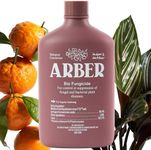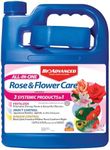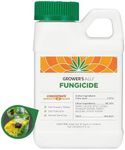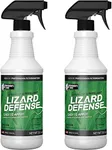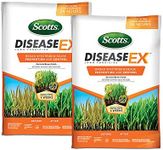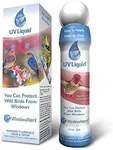Buying Guide for the Best Plant Fungicide
Choosing the right plant fungicide is crucial for maintaining the health and vitality of your plants. Fungicides help to prevent and control fungal diseases that can damage or kill plants. When selecting a fungicide, it's important to consider several key specifications to ensure you pick the best product for your specific needs. Understanding these specifications will help you make an informed decision and keep your plants thriving.Active IngredientThe active ingredient in a fungicide is the chemical component that targets and controls fungal diseases. This is important because different active ingredients are effective against different types of fungi. Common active ingredients include copper, sulfur, and chlorothalonil. To choose the right one, identify the specific fungal issue affecting your plants and select a fungicide with an active ingredient known to combat that particular fungus.
Mode of ActionThe mode of action refers to how the fungicide works to control fungal diseases. This can be contact, systemic, or translaminar. Contact fungicides remain on the surface of the plant and kill fungi on contact, making them suitable for immediate control. Systemic fungicides are absorbed by the plant and provide internal protection, which is ideal for long-term prevention. Translaminar fungicides move through the leaf tissue, offering protection on both sides of the leaf. Choose based on whether you need immediate action or long-term protection.
Spectrum of ActivityThe spectrum of activity indicates the range of fungal diseases a fungicide can control. Broad-spectrum fungicides are effective against a wide variety of fungi, while narrow-spectrum fungicides target specific types. If you are dealing with multiple fungal issues or are unsure of the exact fungus, a broad-spectrum fungicide may be more suitable. For targeted treatment, a narrow-spectrum fungicide is more effective.
Application MethodFungicides can be applied in various ways, including sprays, dusts, and soil drenches. The application method is important because it affects how the fungicide interacts with the plant and the environment. Sprays are common and easy to apply, dusts are good for covering large areas, and soil drenches are effective for root diseases. Choose the method that best fits your plant's needs and your ability to apply it correctly.
Residual EffectThe residual effect refers to how long the fungicide remains active after application. This is important for ongoing protection against fungal diseases. Short-residual fungicides need to be applied more frequently, while long-residual fungicides provide extended protection with fewer applications. Consider how often you are able to apply the fungicide and the level of protection your plants need when choosing the residual effect.
Plant SafetyPlant safety refers to the potential for the fungicide to cause damage to the plants it is meant to protect. Some fungicides can be phytotoxic, meaning they can harm the plant if not used correctly. It's important to choose a fungicide that is safe for the specific type of plant you are treating. Always read the label and follow the instructions to avoid any adverse effects on your plants.
Environmental ImpactThe environmental impact of a fungicide includes its potential effects on non-target organisms, soil health, and water quality. Some fungicides can be harmful to beneficial insects, aquatic life, or can persist in the environment. Choose a fungicide with a lower environmental impact if you are concerned about sustainability and the health of your garden ecosystem. Look for products labeled as eco-friendly or organic for a more environmentally conscious choice.

